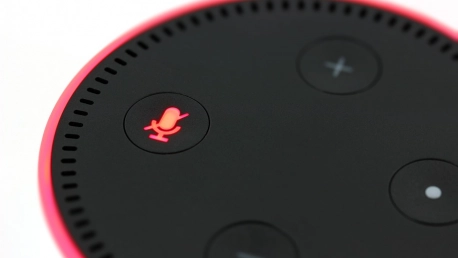Tight on time? Still need to schedule that meeting next Friday and follow-up on an important email? Not to worry! Get it all done in seconds, without moving a finger—use only voice commands.
Unless workers immersed themselves in a chapter of their favorite fantasy book during their lunch break, that’s not something they would have seen in an office setting a few years ago. Flash forward to 2019, and voice-controlled assistants don’t belong in the pages of science-fiction novels any longer—they’re coming to a desk near you. And the truth is, your workplace needs to adapt to this new reality.
Outlined below are the tips and tricks you might need to prepare for the arrival of voice assistants in your office.
But First, Let’s Get to Know Voice Assistants a Little Better
You talk, they listen carefully. You need to get to work on time, they are ready to show you the quickest route. You have to prioritize important tasks, they already anticipated that need.
It’s a familiar scene now. Your voice assistant understands your voice commands and readily completes the requested task. How exactly did we get here, though? It may look like voice assistants came out of nowhere when, in fact, speech recognition technology has been around for quite a while. Sure, the progress might have been slow-paced, but for a good reason: all this time, voice assistants have been learning how to interact with you.
The story goes back to the late 1870s. Back then, Thomas Edison revealed a historic invention: the first device that was able to record and reproduce sound. But it wasn’t until 1952—when researchers at Bell Laboratories built AUDREY, that the first speech recognition device was officially launched. The problem?
“AUDREY occupied a six-foot-high relay rack, was expensive, consumed substantial power, and exhibited the myriad maintenance problems associated with complex vacuum-tube circuitry. More important, its reliable operation was limited to the accurate recognition of digits spoken by designated talkers.”
— Jim Flanagan et al., in “Trends in Speech Recognition,” Wayne E. Lea editor, 1980
Long before IBM announced Watson Assistant in the 2000s, the company was making great strides in speech recognition with the Automatic Call Identification system in 1971. While the machine enabled engineers anywhere in the United States to talk to and receive spoken answers from a computer in Raleigh, NC, one major hurdle remained: discrete dictation.
Until Apple’s Siri took over. Need we say more? Based on speech recognition and natural language processing, Siri has many context-aware features—and it keeps getting smarter. Together with Amazon’s Alexa, IBM’s Watson, Google’s Assistant, and Microsoft’s Cortana, the popular intelligent assistant continues to dominate the consumer market.
Now, Voice Assistants Are Making Their Way into Your Workplace
Raise your hand if you like to save time—and be more productive as you juggle your day-to-day responsibilities. The reality is, we all do. As always, that’s where emerging technology comes in.
Today, the average person types between 38 and 40 words per minute—yet, in the same amount of time, an individual can speak around 125 words. Imagine the time you could save! No wonder the workplace is the obvious next step for voice assistants. Is there a place for these intelligent tools in your very own office? A resounding yes! While you’re busy running your business, your voice assistant will gladly:
- Streamline tasks and control your working environment by starting a meeting or reporting issues to IT.
- Transcribe meeting notes from multiple languages and delicate tasks to individual team members.
- Create calendar appointments, answer your queries and questions, or call anyone in your contacts list.
But like with any other software implementation process, there are various steps you should take to ensure that you make the most of your voice-activated assistant.
Firstly, don’t just choose between Siri or Alexa—go for the right system. To zero in on your best fit, start by doing a comprehensive technology evaluation. After that, decide which solution is ready to provide exactly what you’re looking for; from features, cost, and security to storage capacity.
Secondly, place your voice assistant in the right location within the office. An open-office environment can be noisy. Add voice-powered assistants to it and watch it get even noisier. While these tools can foster collaboration for some, they can also hinder productivity in other cases. On top of that, multiple systems could be triggered at the same time. So you might want to keep them confined to one room.
Thirdly, ensure that your voice-activated assistant is accessible for every department that could make good use of it. Disabled employees, for instance, will benefit greatly from this technology. With this game-changing device by their side, these people will receive all the assistance they need to improve decision-making and take their performance levels to new heights.
Finally, the future of voice assistants in the workplace is bright. Take full advantage of these gadgets to optimize productivity, gain access to actionable business insights, and streamline your operations—before your competitors get a head start.









